Virtual FDD. Virtual floppy drive
It sometimes surprises me that people are looking very much difficult paths for solutions simple problems... Moreover, the ways are obviously commercial. Recently stumbled upon paid program to emulate a floppy drive (i.e. a floppy drive or floppy disk magnetic disk, in short, you understand what antiques in question:)). There is a simpler and completely free way.
There are situations when you need to imitate the presence of a floppy disk drive in the system, for example, to install a tricky program on a netbook, the key of which is a floppy disk supplied in retail packaging. Without this floppy, an honestly purchased program will have to be broken with cracks, for some this is not the most pleasant way to make the software work, if not demotivating :). Another option is to run ancient operating systems in a virtual machine. For example, install and poke Windows 95, if suddenly nostalgia stuck and you want to remember your youth. Or there ... if there are images of floppy disks made when the floppy was still present in the system. Yes a bunch possible options may arise that require an FDD - floppy disk drive.
Personally, I have not been using floppy disks for seven years, okay, for five years so for sure, because I remember that when I was in graduate school (from 2002 to 2005), we were required to provide materials on diskettes and in MS Office format. Cool, yeah?
Subsequently, I did not feel the need for floppy disks (moreover, my only FDD dates back to 1997, and he had already unfastened his skis long ago, lying in a dry and dark place). But this did not prevent me from using a virtual disk drive, although the need for one arose from the force three times a year. But, nevertheless, the very fact of the alternative possibility to spin the floppy disk is important.
In general, a strange phenomenon, it would seem a long time ago, floppy disks and their support should have disappeared from motherboards and BIOS, however, no, IDE interfaces disappear (in general, also correct), being replaced by SATA and eSATA connectors, and the floppy still feels at ease ... Why? Hmm, now it is fashionable to interpret everything in accordance with the base Freudian inclinations, so the act of penetrating a floppy disk into the drive probably causes uncontrollable associations ...
Even without this vulgarities floppy disks have their own aesthetics, it is a multi-piece and complex device, as opposed to sleek, flat and boring as a pancake, optical disc... There is a certain charisma in the floppy disk, and over the decades there is also a good design, both external and utilitarian, practical, which was hidden and muted by the too frequent, dominant use of floppy disks in the old years.
Looking into the distant corners of the table, I found about 35-40 floppy disks in transparent plastic boxes. In my memory, one floppy disk cost 75-50 American cents, it was a lot of money, and in the first years of post-restructuring floppy disks were not a hot commodity and consumable... They served until their complete physical collapse, which came unexpectedly, imagine - a dozen floppy disks filled with linked archive volumes (remember, the console blue-and-white RAR), and two of them were ordered to live a long time ... And at least cry, at least ... :)
But, enough ranting. So, three points.
1) If you need boot floppy images for all kinds of operating systems, including, of course, Windows, then you should take a look here. I, personally, have downloaded a bootable floppy disk for Windows 95, which I have already thrown on virtual machine... Install old ones without a floppy OS sometimes it’s unrealistic, even proprietary CDs with Windows 95 were delivered without a bootloader - first you had to load DOS, and only then install the system from under it.
3) And finally, a great program for emulating floppy. It is simply called - VFD - Virtual Floppy Drive. It's easy to use too. It can be done in the console, or it can be done in graphics, the latter is more familiar to most users. The program is not just free, it is open source.
I warn you right away, just in case, without laying out the version that I myself use: if you have a desire to download, please go to developer site... Although now (2017) I do not guarantee that it all, even so, even so, generally works ... And someone needs ... If anything - Google, well, it must find it.
How to use?
Unpack ( the link can still be downloaded from my website)), run vfdwin.exe and work. [V text files you can find detailed help, program information, and license, and the other three files are the console version of the program and drivers].
Step 1. Driver tab. Click Install, then Start.
Step 2. Go to the Drive 0 or Drive 1 tab (as you can see, you can emulate 2 devices), click Change in the Drive Letter item - that is, select the letter of the system device (leave the Persistent / Global checkbox so that the drive is not unmounted without a command), usually it is a: or b:, but you can assign any unoccupied system partitions letter. Next, press the Open button, where we select either the floppy image file or the RAM fad, which will create an empty virtual floppy disk in memory. Any type of 3.5 or 5.25 inch floppy disk can be simulated. But for some reason there are no 8-inch floppy disks;).
After that, the virtual disk drive can be used as a real one, copying or deleting, or formatting whatever is needed.
If desired, you can embed items of the virtual disk drive into the context menu (Shell tab) or associate image files with this program (Association tab). This is so - additional functions that do not affect the work.
You can close all this stuff in the reverse order: in the Drive 0 and / or 1 tab, if necessary, press the Save button, save the diskette image with our files in some 12345.img; click Close (virtually delete the floppy disk). Go to the Driver tab, click Stop ( virtual disk The gadfly will be unmounted) and, if desired, Uninstall (i.e. remove the driver from the system). That's all. It couldn't be easier :).
Of course, there are other ways to create virtual drives, but I like this one. Nothing superfluous - excesses are harmful, especially when there is no confidence in their actions.
Good luck, thank you for your attention, all the best!
A free floppy drive emulator for modern computers that do not have connectors for connecting this device.
Background
I'll start with a real case. V the given time I work part-time in the same organization as a kind of system administrator.
Recently, two new computers were bought for the accounting department, since the old ones could no longer cope with the requirements of more and more new programs for reporting to all sorts of ministries. System and everything required programs installed without problems, so I connected both "computers" to the Internet and with the words: "Use your health!", - with a clear conscience went home :). But it was not there:))).
Literally a couple of hours later, they called me back and said that, they say, so and so, but it is not possible for them to transfer some kind of payment. When I arrived, it turned out that the new computers had NO FLOPPY DISK DRIVES !!!
Naturally, I immediately tried to get the required file bypassing the requirements, but the utility refused to issue it except on a floppy disk. Without hesitation, I decided to rearrange the drives from old machines to new ones, but when I opened the case of one of the new computers, it turned out that there was nowhere to connect the "flops", since motherboard there was no connector for FDD :(.
I was already generally upset, but in time a removable floppy drive that I had seen at one of my acquaintances popped up in my memory. It was this device that was requested at the time of the report.
But the situation was saved only for a while, so I was instructed to buy the same portable FDD for accounting. And all would be fine, but it turned out that this is a very scarce piece goods, which were not even heard in all computer stores :).
In short, when I came home, I decided to search the Internet alternative options the solution to the problem and after a long fruitless search, I finally realized that there may be a software emulator "flopik"!
The search result turned out to be a small utility called Virtual Floppy Drive. Weighing less than 200 kilobytes, the program can create up to two full virtual drives for floppy disks of different capacities and form factors.
Key features of Virtual Floppy Drive:
- full integration of the virtual disk drive with Windows (up to Vista);
- the ability to create virtual "floppy disks" with data;
- the ability to quickly change virtual "floppy disks";
- support for 3.5 and 5.25 inch form factors;
- support for virtual "floppy" capacities from 160 KB to 2.88 MB;
- the ability to format virtual "floppy disks";
- the presence of a console version of the utility.
Launching the program
Virtual Floppy Drive does not require installation, so we download the archive, unpack it into any convenient folder and we can start using the program. In the unpacked folder, you will find two executable files: vfd.exe and vfdwin.exe.
The first one launches the console version of the emulator, so we will not consider it (if necessary, you can read about managing this version in the file vfdhelp.txt), but the second is just what we need. By running vfdwin.exe You will see a window Virtual programs Floppy Drive:

Virtual Floppy Drive interface and launch:
There are six tabs in this window, but the Drivers tab opens by default. It is with her that we should start our work. Here we need to install the virtual drive driver and run it. The driver itself is usually detected automatically in the "Driver File" window. If this did not happen (the window remains empty), click the "Browse" button, find the file in the program folder vfd.sys and specify it as a driver.
The next step is to select the type of program launch. Available manual ("Manual") and automatic ("Auto") launch of the application along with the system. If you constantly need to work with the "flop", then I recommend choosing the "Auto" mode. We confirm our choice by clicking the "Apply" button.
When everything is configured, press the "Install" button to install the Virtual Floppy Drive service, and then "Start" to start the emulator (if you click "Start" immediately, the service will be installed anyway;)). If you wish, you can always turn off the virtual drive by clicking "Stop" and remove the program service with the "Uninstall" button.
The service is running, the emulator is running, but no changes seem to be happening - why? Because now it's the turn to configure the virtual drive itself. To do this, go to the "Drive0" or "Drive1" tab and perform some manipulations. Namely, we will click the "Change" button at the very top and in the window that appears, we will indicate the letter (preferably A or B) for our virtual drive.
Now, after confirming the selection in the My Computer folder, you will find a new floppy drive with the letter you just specified:

If you double-click on a new virtual floppy drive, it, like the real one, will ask you to insert a floppy disk, but where can you get it ... The turn of the next stage has come - creating an image of a floppy disk.
Creating a virtual diskette
Click the "Open" button in the drive control window and in the window that opens, set the type and capacity of our virtual "floppy". Leave the "Image File" field empty for now, and in the "Disk Type" section, "RAM" must appear (that is, we create the first "floppy" in virtual memory your PC):

Click the "Create" button and look at the changes in the drive control window:

We have activated three new buttons: "Save", which allows you to save virtual image"Floppy" to a file, "Close" to "extract" the image, and "Format" to format the virtual "floppy" to FAT system... By the way, you can format a floppy disk image using standard tools Windows: via the context menu of the floppy drive or via the appropriate console command.
Now, if you try to open the created floppy drive, an empty window will open in front of you, into which you can move files up to 1.4 megabytes in size.
Virtual floppy drive settings
For the time being, let's leave the disk drive control tab and look at those that have so far been ignored. The first one is "Association". It can be used to associate a Virtual Floppy Drive with files of a certain type as virtual "floppies" (although not required). Here you can choose from existing types or even create your own by clicking the "New Extension" button:

Another option is the Shell tab. With its help, we can add new entries to the context windows menu and also create shortcuts for drives on the desktop. The first option is only needed for old Windows versions, since, since XP, entries for sending files to new drive and others are created automatically, so you can leave nothing to check here too (unless you need shortcuts):

Working with a virtual disk drive
Now, in practice, let's work with a virtual floppy drive. You can open a floppy image and try dragging and dropping into open window any small file. Happened? Congratulations! This means that Drag & Drop support works for you. If the file was not copied, go back to the "Shell" tab and check the first item.
The next test will allow us to check whether it is possible to access the drive through the context menu. Let's select a small file and, by calling the "Send" item in the context menu, activate the item with the name of our "flop". If the file was not copied or the corresponding entry in the menu is missing, you again need to activate the above item in the settings:

If everything went well, then by opening the "floppy" you will find on it the file that you copied:

Now you can do everything except saving and changing virtual "floppies". But before saving, we need an empty file that will be used as an image. It is not difficult to create it. Let's go to the folder where our "floppy disks" will be stored and create any file (context menu - item "Create").
Now let's just change the file extension to one of those listed in the "Association" tab (if the extension is not displayed for you, go to the "Tools" menu of any folder, select the "Folder Options" item, in the window that opens, go to the "View" tab and deactivate the item "Hide extensions for registered file types"). That's it - the future image is ready:

Now we return to the drive control tab (the first one) and press the "Save ..." button. In the window that opens, indicate the newly created image file, check the "Overwrite an existing file" item and click "Save":

Our virtual diskette is now saved, files from it will not go anywhere, and they can be read at any time.
The last thing you need for work is to be able to change "floppy disks". As I said above, to "remove" it, just press the "Close" button, after which only the "Open" button will light up again. We press it and in the window already familiar to us, select now the saved image of the required "floppy disk" using the "Browse ..." button. Next, specify the "Disk Type" "File" and click "Open".

Congratulations! "Floppy" has been loaded successfully!
conclusions
Of course, Virtual Floppy Drive emulates a floppy drive only at the software level, so work with it outside Windows environment(for example, it will not be possible to boot from it into the BIOS) :(.
However, if you encounter a problem similar to mine, when a "flop" is required for the successful operation of specific applications, then with the help of this small utility you will save about 200 hryvnia (about 800 rubles) on the purchase of an external USB-FDD !!! Good luck in all your endeavors and may your computers bring you less of a hassle;).
P.S. It is allowed to freely copy and quote this article, provided that an open active link to the source is indicated and the authorship of Ruslan Tertyshny is preserved.
P.P.S. In Windows, you can emulate not only floppy drives, but even create full-fledged copies of real CD / DVD drives. If you are in need of this, I advise you to pay attention to one of the most popular utilities of this kind:
P.P.P.S. If you already have a physical floppy drive and you decide to install this program, be prepared for the fact that your physical drive will disappear from the list logical drives... This happens if a virtual drive letter is assigned to an existing drive. That is, the real disk is replaced with a virtual one, and the real one disappears.
The following actions will help to correct the situation:
1. Remove from the hardware manager:
a) Floppy disk drive,
b) Floppy disk controller.
2. Delete the branch from the registry:
HKEY_LOCAL_MACHINE \ SYSTEM \ CurrentControlSet \ Enum \ ACPI \ PNP0700 \ 4 & 1e2bbe8d & 0
3. Reboot.
So we have lived to the point where a device called a "floppy drive" is absent as a class in modern computers... Having appeared a long time ago, the floppy disk long time was a familiar device for exchanging information between local computers.
8 ", 5.25", 3.5 "- how can you not improve further, but the write speed is still small, the volume of the drive is also penny by modern standards, and I think it's not even worth talking about the reliability of information storage. flash drives that quietly survived from system unit good old 3.5 ". But what to do if you suddenly need a floppy drive, but you don't have it at hand? An emulator - a virtual floppy drive - will come to the rescue.
Virtual Floppy Drive (VFD) is a tiny program that will allow you to install a virtual disk drive into your system and work with diskette images as if they were real. The program has a "dual" interface: the set includes console version (vfd.exe) and version c graphical interface(vfdwin.exe). To work with a virtual drive, the program installs its own driver into the system. Virtual Floppy Drive allows you to configure the type and size of the emulated disk: from 160 KB 5.25 "to 2.88 MB 3.5", as well as the letter logical drive which will be bound to the device. In addition, VFP is capable of opening floppy disk images in various formats: Bin, Dat, Fdd, Flp, Ima, Img, Imz, Vfd. The mounted image can be protected from writing, it is possible to save changes to the disk back to the image.
ImDisk Virtual Disk Driver- the distribution kit consists of one exe-file about 300 Kb in size, which, when launched, installs ImDisk into the control panel.

The program allows you to create a virtual disk not only as a floppy drive, but also as HDD, CD / DVD, so for correct emulation of FDD it is necessary to select the "floppy" parameter in the device type parameter. You can format the created disk using standard tools.
Otherwise, ImDisk has the same capabilities as VFD, except that it allows you to create many virtual disks.
Both programs are free and work great on Windows 7.
In short, if you suddenly need to install old software (on the Web, installation disks are sometimes in the form of floppy disk images), some of your programs need access to a diskette, or you just want to feel nostalgia, you should know that a virtual disk drive will help you out.
Vyacheslav RYTIKOV
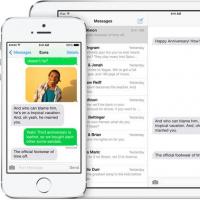 How to update iPad: instructions
How to update iPad: instructions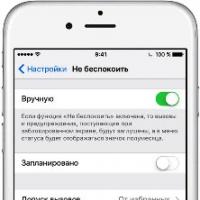 How Do Not Disturb mode works on iPhone
How Do Not Disturb mode works on iPhone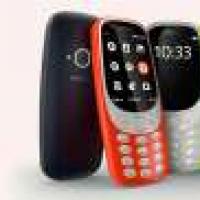 Nokia 3310 when it came out. How they find us
Nokia 3310 when it came out. How they find us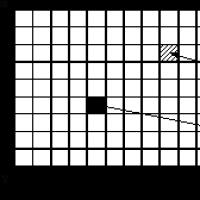 History of computer graphics in Russia 1 history of development of computer graphics
History of computer graphics in Russia 1 history of development of computer graphics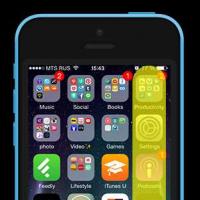 Complete order: How to organize icons on a smartphone Complete order: How to organize icons on a smartphone
Complete order: How to organize icons on a smartphone Complete order: How to organize icons on a smartphone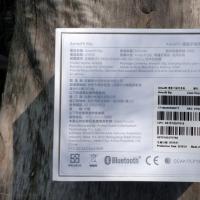 Xiaomi Huami Amazfit Bip is the best smartwatch without any but even if
Xiaomi Huami Amazfit Bip is the best smartwatch without any but even if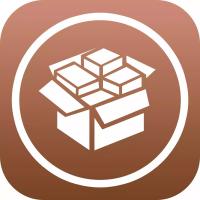 What is Jailbreak and what is it for?
What is Jailbreak and what is it for?